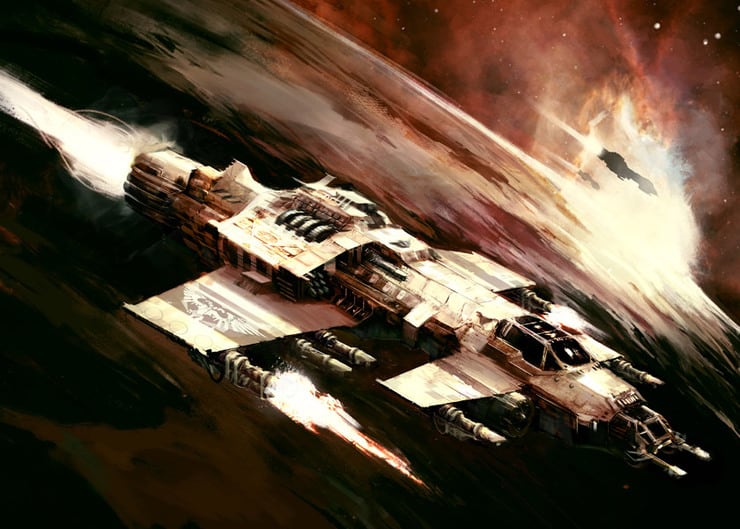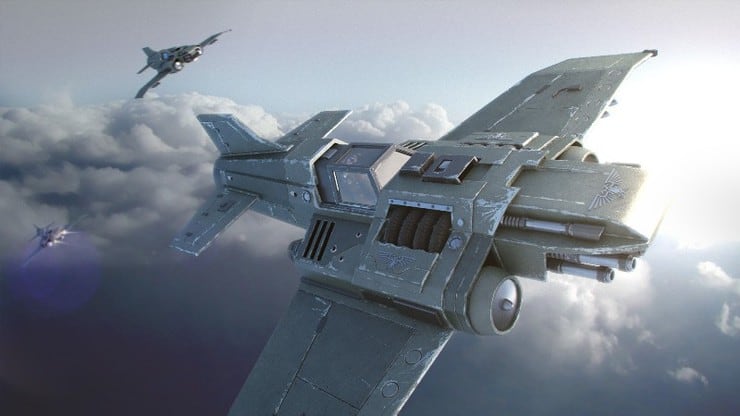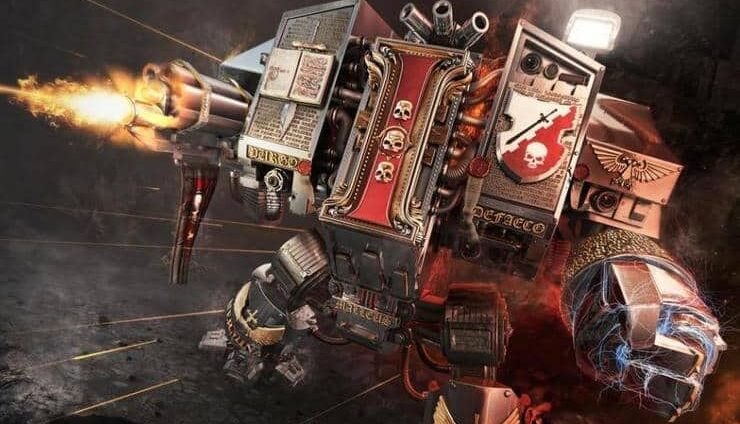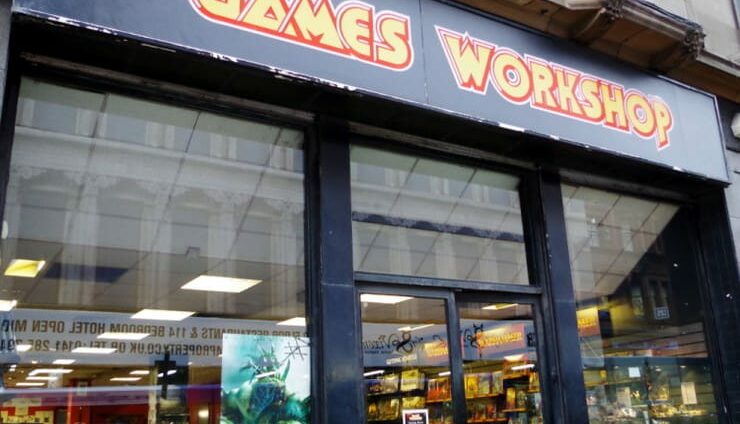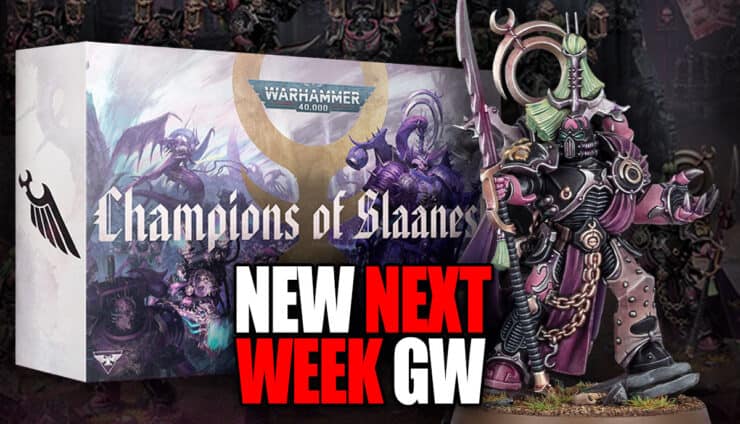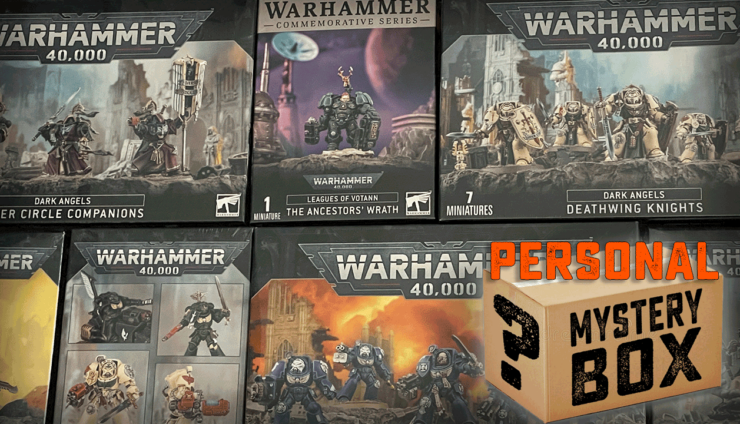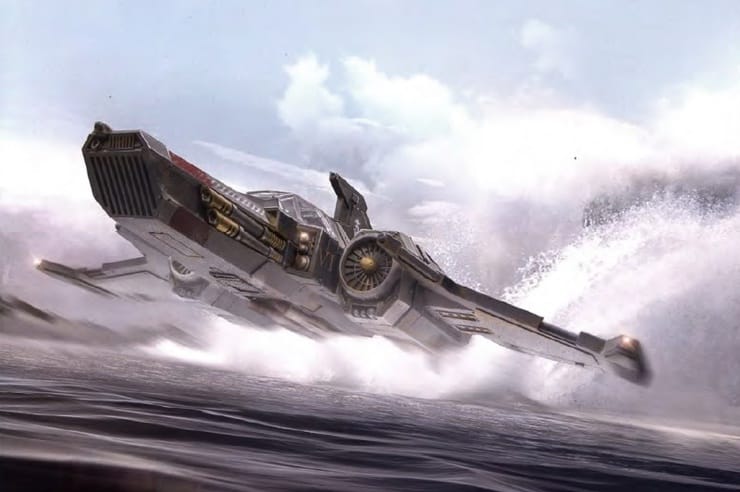
From the iconic Xiphon of the Astartes to the Thunderbolt of the Imperial Navy, these and other fighters have aided in the Imperium’s expansion.
Via our good friends at Lexicanum
The Xiphon Pattern Interceptor was a fighter aircraft used by the Legiones Astartes during the Horus Heresy. Capable of both atmospheric and space flight, it carried two pairs of twin-lined Lascannons and a Xiphon Rotary Missile Launcher into battle. This firepower combined with the interceptor’s speed and agility made it a deadly opponent. However the design was complex, had limited range, ill-favored by the Mechanicum, and was preferred by the larger Wrath.
The origins of the fighter are long lost, but it shares similarities to the STC patterns with craft such as the Thunderbolt and Amhut Voyager. The design itself was brought into Imperial service in 806.M30 from the Rhadamanthys Enclave. The fighters performance puts great stress on its pilot, something Space Marines were naturally able to withstand. The Wrath Pattern Starfighter was a space fighter used by the Adeptus Astartes and Imperial Army during the Great Crusade and Horus Heresy.
By the beginning of the Heresy it had become obsolete, increasingly replaced in Imperial service by the Fury Interceptor as the Fury was easier to produce, handled more smoothly, and suffered from less technical malfunctions. The Fury Interceptor is the most common starfighter used by the Imperial Navy for space combat, having replaced the older Wrath Starfighter by the end of the Horus Heresy. With some variants reaching 60 to 70 meters in length, the Fury is significantly larger than most atmospheric fighters, and carries a pilot, navigator and gunner, although a pilot and gunnery officer are more than sufficient on scouting missions.
On occasion, an Astropath will also be aboard, to provide greater communications capability. The crew of a Fury Interceptor often wear suspensor wire pressure suits and specially contoured helmets to prevent to side-effects of rapid-acceleration. The Fury’s reinforced hull contains an extensive network of circuitry and life-support systems including pumps that cycle super-oxygenated blood into the crew’s body through spinal connections, a chemical toilet and sleeping compartments.
Furies are normally equipped with multiple forward-firing banks of lascannons and anti-starfighter missiles and its twin engines are able to put out sixty thousand pounds of thrust. Some variants of the Fury Interceptor are known to possess shielding of an undetermined type. This is seen on Hornet and Storm Squadrons of the Lord Solar Macharius, including the ability to redirect shields to individual facings.
However more veteran pilots in the Imperial Fleet still preferred the Wrath, seeing it as a finer instrument of void war over the “sterile” Fury. However like the Fury, the Wrath was crewed by a mix of human or space marine pilots and Servitors. Thus by the end of the Great Crusade it had fallen out of frontline service in all Space Marine Legions except the Dark Angels and Ultramarines, though the demands of the Heresy forced many more Legion’s to press them into service once more.
The Thunderbolt heavy fighter is the workhorse of the Imperial Navy. A rugged and reliable design, with good firepower and maneuverability, the Thunderbolt has been in service for centuries and remains well-liked by its crews. The Thunderbolt primarily serves as an air superiority fighter, given the task of hunting down enemy bombers or engaging enemy fighters in order to establish air superiority over the battlefield. However one of the chief advantages of the design is its versatility, allowing it to fulfill other types of missions. Thunderbolt fighters frequently serve as high altitude escort fighters for flights of Marauder Bombers. They can also be adapted to serve as low level fighter-bombers, night fighters and reconnaissance aircraft. Typically, Imperial Navy Thunderbolt Wings operate thirty aircraft.
The Thunderbolt is a tough aircraft to destroy, built around an armored superstructure and cockpit. Twin F122v afterburning turbofans gives the Thunderbolt a good top speed in atmospheric flight, while a rocket booster engine allows it to operate in the vacuum of space and for fast take-offs when mounted on ground-based hydraulic ramps. The Thunderbolt should not be confused with a true “star-fighter” like the Fury Interceptor though, as its space capabilities are used primarily when deploying from an orbiting spacecraft into the atmosphere or likewise returning. Quad nose-mounted Autocannons serve as the primary dogfighting and anti-infantry weapons, while a pair of twin-linked Lascannons are normally used to engage enemy ground vehicles. Four pylons, two mounted underneath each wing, allow the fighter to carry up to four extra fuel tanks, Bombs, Hellstrike Missiles or, more rarely, air-to-air missiles. It can also mount additional equipment.


